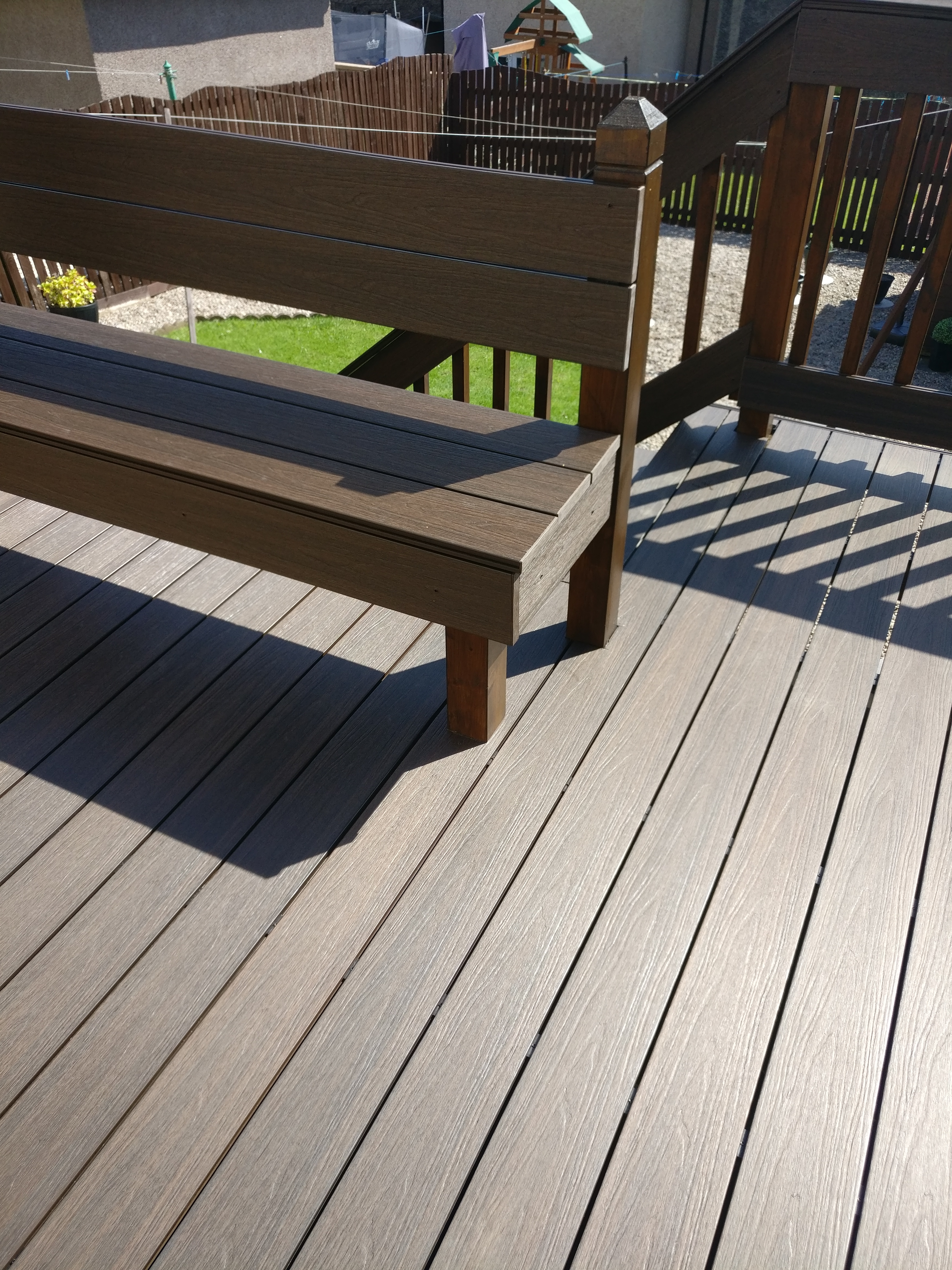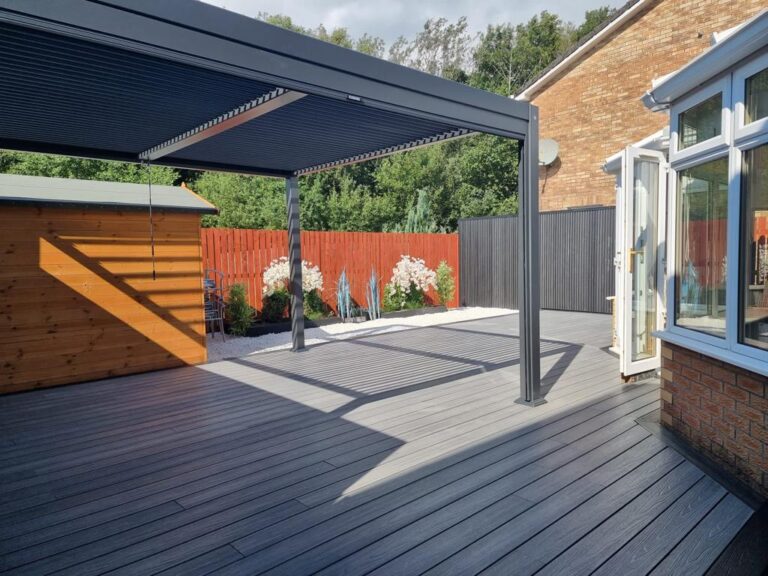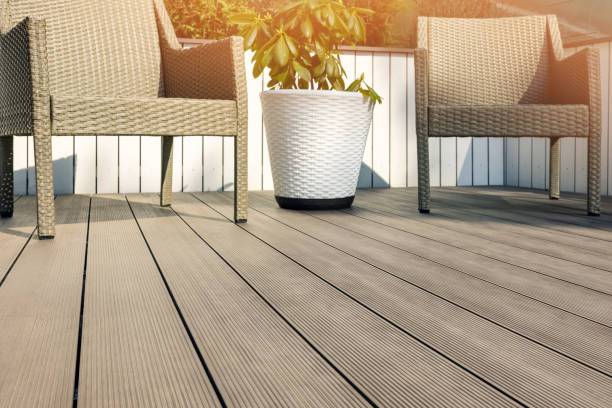Composite decking has become a popular choice for outdoor living spaces due to its numerous benefits. From low maintenance and durability to a variety of colours and styles, it offers an attractive alternative to traditional wood decking. Like any product, it also has its drawbacks. In this comprehensive article, we will explore the benefits and drawbacks of composite decking, as well as provide insights into alternative decking options.
Whether you are considering a new deck or looking to upgrade an existing one, understanding the pros and cons of composite decking and exploring alternative materials is essential for making an informed decision. So, is there something better than composite decking? Let’s delve into the world of decking materials to find out.
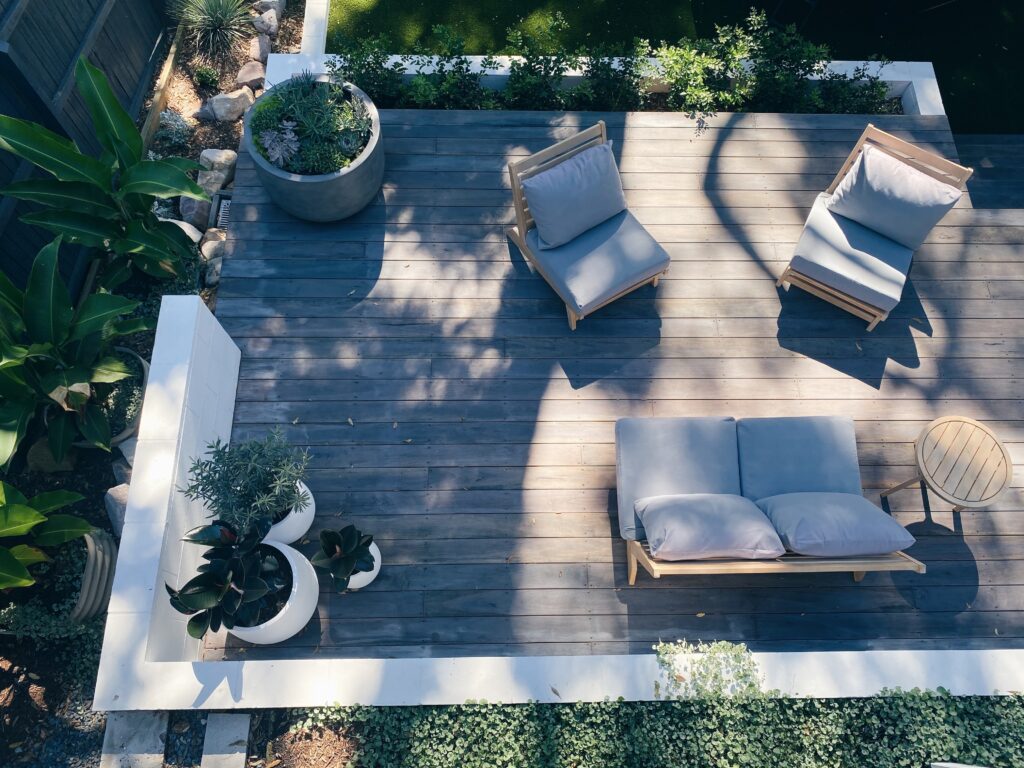
What Is Composite Decking?
Composite decking is a modern alternative to traditional wood decking, offering a blend of recycled wood fibres and plastic materials to create a durable and long-lasting outdoor flooring solution.
It’s composed of a mix of wood pulp, recycled plastic, and binding agents, providing a weather-resistant and low-maintenance option for outdoor living spaces. With its resistance to weather, rot, and insect damage, composite decking requires less maintenance and upkeep compared to natural wood, saving homeowners time and money in the long run.
Composite decking’s eco-friendly nature, as it utilises recycled materials, makes it a sustainable choice for environmentally-conscious consumers. When considering the cost of installation and long-term maintenance, composite decking is a cost-effective option that provides both aesthetics and practicality for outdoor living areas.
What Are The Benefits Of Composite Decking?
Composite decking presents several advantages, including:
- Low maintenance requirements
- Remarkable durability
- Eco-friendly composition
- A wide variety of colours and styles to complement diverse outdoor living spaces
Low Maintenance
One of the standout features of composite decking is its low maintenance characteristics, providing a hassle-free outdoor flooring solution for sustainable and eco-friendly construction projects.
This type of decking is engineered to resist fading, staining, and mould growth, reducing the need for regular maintenance such as sanding, sealing, or staining. It is also made from a combination of wood fibres and recycled plastics, contributing to sustainable practices and reducing environmental impact. Composite decking materials are designed to withstand harsh weather conditions, ensuring durability and longevity, making them an ideal choice for environmentally conscious construction projects.
Durable and Long-lasting
Composite decking boasts exceptional durability and longevity, showcasing remarkable resistance to outdoor elements, making it an ideal choice for outdoor spaces, ensuring enduring performance and weather resistance.
It is designed to withstand the harshest weather conditions, from scorching sunlight to heavy rain, without warping or fading. This low-maintenance solution resists moisture, mould, and mildew, ideal for areas with high humidity or near water sources.
The installation process is also relatively straightforward, with various methods available to suit different preferences, ensuring a hassle-free and lasting addition to any outdoor area.
Environmentally Friendly
Composite decking is an environmentally friendly option for outdoor living, as it utilises sustainable materials, providing a long-lasting and eco-friendly alternative to traditional wood decking.
It is constructed using a blend of recycled wood fibres and plastic, diverting materials from landfills and reducing the need for harvesting new timber. This sustainable composition not only conserves natural resources but also helps in preventing deforestation. Composite decking requires minimal maintenance, eliminating the need for harmful chemical treatments often used on wood. Its durable nature also leads to a longer lifespan, reducing the frequency of replacement, making it a truly sustainable option for outdoor spaces.
Variety of Colours and Styles
Composite decking offers a wide range of colours and styles, providing versatile design options for outdoor flooring, and catering to diverse aesthetic preferences and design needs in outdoor construction projects.
From classic earthy tones like warm browns and greys to more contemporary hues like cool blues and muted greens, composite decking presents an array of colour options. Its design flexibility allows for the embodiment of different wood textures, from fine-grained finishes to rustic embossed patterns, ensuring a seamless fit with any outdoor theme.
Whether a sleek modern terrace or a traditional backyard retreat, composite decking remains a popular choice for its ability to effortlessly blend with various architectural styles and landscape settings, while offering exceptional durability and low-maintenance features.
What Are The Drawbacks Of Composite Decking?
Despite its numerous benefits, composite decking does have some drawbacks, including a higher initial cost, susceptibility to scratches and stains, and the potential to become hot in direct sunlight.
This higher initial cost can be a significant downside for those on a tight budget, and the susceptibility to scratches and stains may require additional maintenance over time. The potential for composite decking to become hot in direct sunlight can limit its comfort and usability during warmer months. It’s important for consumers to weigh these drawbacks against the benefits to make informed decisions when considering composite decking for their outdoor spaces.
Higher Initial Cost
One of the drawbacks of composite decking is its higher initial cost when compared to traditional wood decking, which may influence cost-conscious consumers during material selection for outdoor construction projects.
It’s essential to consider the long-term savings and benefits that composite decking offers. While the upfront investment may be higher, composite decking requires minimal maintenance and is exceptionally durable, reducing the need for frequent repairs and replacements associated with wood decking.
Composite decking is resistant to rot, mould, and insect damage, making it a more sustainable and cost-effective option over time. This long-term perspective can make composite decking a valuable investment despite the initial higher cost.
Prone to Scratches and Stains
Composite decking is prone to scratches and stains, requiring regular maintenance to uphold its performance and visual appeal, which can be a consideration for users seeking a low-maintenance outdoor flooring solution.
These imperfections may occur due to regular foot traffic, furniture moving, or accidental spills. To mitigate this, users should consider placing protective mats under furniture and promptly cleaning any spills to prevent stains. Applying a protective sealant or coating can help enhance the decking’s durability and resistance to scratches and stains.
Whilst composite decking offers benefits such as resistance to rot, mould, and insects, it’s important for users to be aware of the maintenance requirements to ensure its longevity and performance.
Can become hot in direct sunlight.
One drawback of composite decking is its potential to become hot in direct sunlight, affecting its suitability for outdoor spaces exposed to intense sunlight, which may influence material choices in such environments.
This issue has led manufacturers to focus on enhancing the weather resistance of composite decking materials. Advanced technologies and innovative designs have been developed to mitigate the heat retention in these materials, making them more suitable for outdoor use in sunny climates. By reducing the heat absorption and retention, composite decking can better withstand prolonged exposure to sunlight, offering homeowners a durable and comfortable outdoor flooring solution. These advancements have significantly improved the usability of composite decking in outdoor spaces, making it a favoured choice for many homeowners.
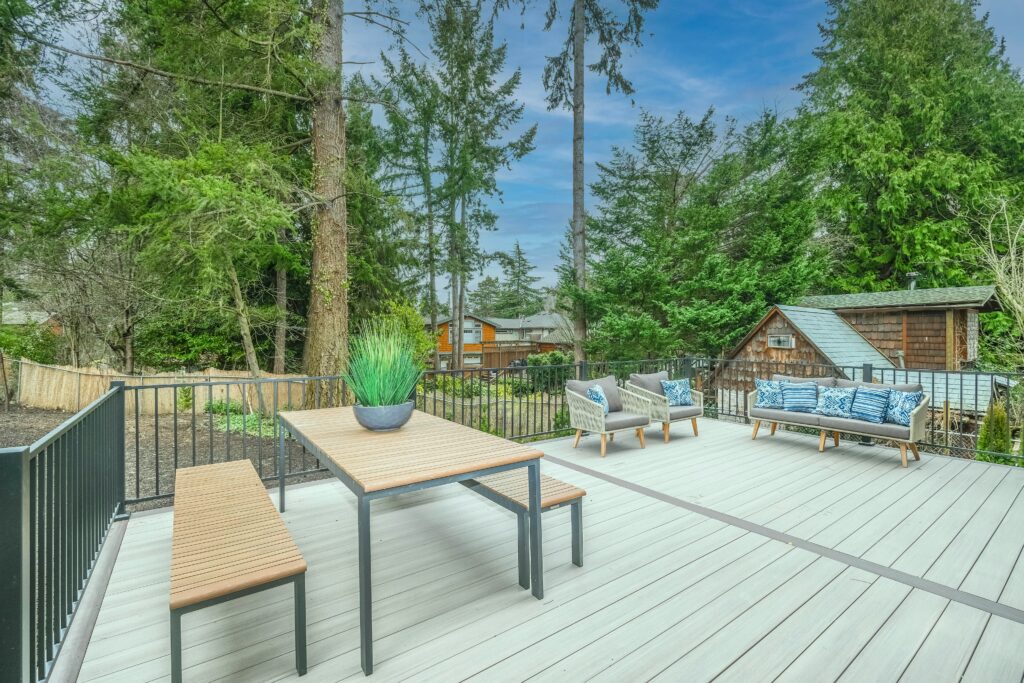
Is There Something Better Than Composite Decking?
Whilst composite decking offers numerous benefits, there are alternative options available, and understanding the comparison between these materials can help in selecting the most suitable decking solution for specific outdoor construction projects.
Homeowners and contractors can explore various alternative decking materials such as:
- PVC
- aluminium
- wood
- and even recycled plastic
Each material has distinct characteristics, ranging from durability and maintenance requirements to aesthetics and environmental impact.
By considering factors like climate, budget, and desired visual appeal, individuals can make informed decisions about the best decking material for their unique project needs.
What are the alternatives to composite decking?
Exploring the alternatives to composite decking reveals a range of options, including natural wood, PVC, aluminium, capped polymer, concrete, and stone decking, each offering unique characteristics and benefits for outdoor construction projects.
Natural wood boasts a timeless appeal, providing a warm, organic aesthetic that adds natural beauty to outdoor spaces. PVC decking offers low maintenance and durability, ideal for areas with high moisture and heavy foot traffic.
Aluminium decking stands out for its lightweight, rust-resistant properties, making it a popular choice for coastal and humid environments. Capped polymer decking combines the beauty of wood with the durability of synthetic materials, providing resistance to moisture, mould, and fading.
Concrete and stone decking offer unmatched durability, versatility, and an opportunity for creative design, suitable for contemporary and rustic outdoor settings.
Natural Wood Decking
Natural timber decking remains a popular choice for outdoor spaces, providing a classic aesthetic appeal and a traditional timber construction approach for outdoor decking projects, offering a timeless charm to outdoor living areas.
It boasts a unique blend of natural beauty and durability, with each plank telling its own story through grain patterns and rich colours. Natural timber decking creates a warm and inviting atmosphere, making it an ideal space for relaxing, entertaining, and enjoying the outdoors. Its natural insulating properties and ability to withstand varying weather conditions make it a practical and reliable choice for outdoor deck installations. The versatility of natural timber allows for customisation and personalisation, ensuring a distinct and personalised touch to any outdoor setting.
PVC Decking
PVC decking presents a synthetic alternative to traditional wood options, offering durable and low-maintenance materials for deck construction, catering to outdoor products and construction needs with its synthetic materials.
These synthetic materials are engineered to resist fading, staining, and scratching, making PVC decking a popular choice for outdoor spaces. Its durability means that it can withstand a variety of weather conditions, from intense sunlight to heavy rain, without warping or splintering. PVC decking also requires minimal maintenance, as it is resistant to mould, mildew, and moisture damage, ensuring a long-lasting and attractive outdoor space for homeowners. Its suitability for deck construction and outdoor product requirements makes it an excellent choice for those seeking a reliable and low-maintenance decking solution.
Aluminium Decking
Aluminium decking presents an environmentally-friendly and durable choice for outdoor construction projects, offering lightweight and corrosion-resistant deck materials for outdoor living spaces, ensuring sustainable and eco-friendly construction.
Its eco-friendly nature extends to the fact that it is often made from recycled aluminium, reducing the demand for new raw materials and minimising environmental impact. This type of decking also requires minimal maintenance, saving time and resources in the long run. Aluminium decking’s durability ensures a long lifespan, standing up to harsh weather conditions without warping or rotting. Its suitability for outdoor construction is further enhanced by its resistance to insects and fire, making it ideal for creating safe and long-lasting outdoor living areas.
Capped Polymer Decking
Capped polymer decking represents a sustainable and synthetic option for outdoor design and construction, offering enhanced durability and aesthetic choices for outdoor living spaces, ensuring a sustainable and eco-friendly design approach.
It is crafted using a blend of reclaimed wood fibres and recycled plastic, minimising the demand for new materials. This sustainable design contributes to a reduced environmental impact while maintaining exceptional performance. The durable capped polymer shell provides protection against stains, scratches and fading, ensuring longevity and reducing the need for frequent replacements.
The wide array of colour options and textures available allows homeowners to create beautiful outdoor living spaces that blend seamlessly with the natural surroundings, offering an attractive and eco-conscious choice for decking.”
Concrete Decking
Concrete decking provides sustainable alternatives for outdoor solutions, offering durable and versatile choices for decking projects, catering to diverse outdoor choices and construction needs with its enduring performance and design flexibility.
It is a popular choice for outdoor spaces due to its ability to withstand harsh weather conditions, including extreme temperatures and intense UV exposure. In addition, concrete decking requires minimal maintenance, reducing long-term costs and environmental impact. Its inherent strength and durability provide a stable base for a variety of outdoor activities, from relaxing in residential settings to withstanding heavy foot traffic in commercial environments.
Stone Decking
Stone decking offers sustainable systems and alternative solutions for outdoor spaces, presenting a unique and natural approach to outdoor construction, ensuring a harmonious integration of outdoor systems and sustainable design.
It provides a durable and low-maintenance surface that resists weathering, making it an ideal choice for outdoor areas. Stone decking offers natural cooling properties, reducing the need for artificial cooling systems and contributing to energy efficiency. Its timeless aesthetic appeal and versatility complement various architectural styles, providing a seamless transition from indoor to outdoor living spaces.
The use of natural stone promotes eco-friendly practices, aligning with the growing emphasis on sustainable design and construction methods.
Composite Wood Decking
Composite wood decking provides sustainable and environmentally-friendly alternatives for outdoor spaces, combining the benefits of composite materials with natural wood aesthetics, offering a versatile and environmentally-friendly solution for outdoor alternatives.
It is crafted from a blend of wood fibres and recycled plastic, creating a durable and low-maintenance decking material that is resistant to rot, decay, and insect damage. This innovative composition ensures longevity, requiring less frequent replacement and reducing the demand for new timber, making it a sustainable choice.
Composite wood decking comes in a variety of colours and textures, allowing homeowners to achieve the look of natural wood without compromising environmental values.

